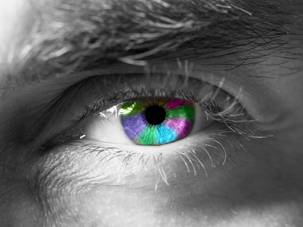
Amazing facts about human eyes |
| 15.05.2018 |

The eyeball weighs only 8 grams, and yet it is one of the most important and most needed organs. After all, the eyes are source of 85% of the information about the surrounding environment. When they are in good health, we tend not to appreciate how amazing they are in their nature.
Each iris is different, there are no two people in the world with the same eyes, not even in the case of identical twins. What's more - the iris of your left eye differs from the iris of the right eye. How is possible? The iris has as many as 256 unique features. For comparison, the fingerprint has only 40.
Retina consists of about 6 million cones and 120 million rods. They are responsible for seeing different colours and hues. However, there are people who, by having 4 different colour receptors, can see as much as 99 million shades. It is a genetic mutation, and such condition is called tetrachromacy.
Blinking is a rapid closing of the eye, which lasts about 100-150 milliseconds. Adults blink 12-17 times in one minute while newborns only 1-4 times. This number increases only around 6 months of age. On average, we blink once every 10 seconds, so it takes 36 seconds per day, which gives 9 days a year.
Your eye moves smoothly only when you are tracking a moving object. Need a proof? Look straight ahead and try to look slowly around the object you see. Did you notice? The eyeball moves is steps – there are breaks and rapid jumps.
Before ten thousand years ago everyone had brown eyes – only then did the blue eyes appear. What is even stranger, brown eye are actually blue, but are covered with a brown pigment.
The eye does not really ‘see’, it registers the image, which is diminished and inverted. Then the image is sent to the brain and processed. In the first days of life, the brain is learning to see the correct image.
The human eye can see even a flash of a single photon - the smallest possible portion of light. If you have good eyesight, at optimal weather conditions, you are able to see a candle light from a distance of 22 km.
If you are suffering from a vision defect, think about laser vision correction.